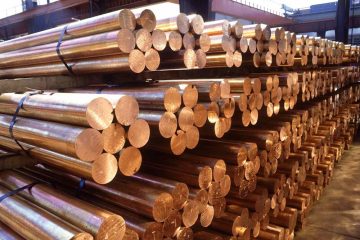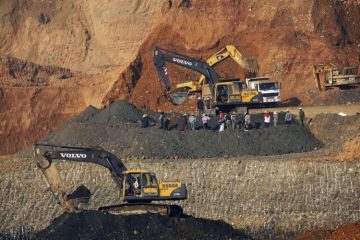World’s gold miners stick close to home in hunt for more metal

The world’s biggest gold miners are taking a cautious approach in their hunt for bullion, spending more money to explore around existing mines rather than new territory in a strategy that may have short-term gains but risks future production growth.
Top producers are relying more than ever on small companies to do the heavy lifting of searching for new deposits and increasingly taking 10 to 20 percent equity stakes in the junior miners.
Exploring close to home is more cost efficient and improves the odds of discoveries. But the chances of making major new finds are limited, diminishing global gold output, which is expected to decline by nearly 9 percent in the next three years.
“It only makes sense to be looking in your own backyard first before exploring elsewhere,” said Paul Rollinson, Chief Executive of Kinross Gold, which spends about 90 percent of its exploration budget around existing sites.
“We focus on areas we already know, with existing infrastructure nearby, in jurisdictions we are comfortable with.”
The world’s 10 biggest gold miners are bumping up the share of exploration budgets earmarked for land around existing mines, or brownfield exploration, increasing the spending to 56 percent in 2015 from 45 percent in 2013.
In the meantime, they curbed spending on greenfield exploration in new territory to 21 percent from 25 percent of their budgets, data from SNL Metals & Mining, a unit of S&P Global Market Intelligence, shows.
“They say the best place to discover a mine is in the shadow of a headframe,” atop mine shafts, said Maria Smirnova, portfolio manager at Sprott Asset Management.
“The rate of failure in exploration is staggering, so it is always better to try and improve what you have already.”
SCREWS ON SPENDING
Barrick Gold, the world’s largest producer by output, looks to near-mine discoveries because plants and equipment are already in place and the deposit is well known, said its president, Kelvin Dushnisky.
Finding affordable and reliable deposits became vital in the last three years as miners slashed spending amid a slump in gold prices. Miners have kept a lid on spending this year despite a partial recovery in bullion prices and income.
Exploration spending by the world’s 10 biggest gold miners, such as South Africa’s AngloGold Ashanti, sank 37 percent to $ 1.075 billion between 2013 and 2015, the last year for which data is available, SNL Metals & Mining data shows.
Newmont Mining the world’s top gold miner by market valuation, cut its exploration budget by nearly 40 percent in 2013 and prioritized areas expected to deliver higher-margin ounces, said Chief Executive Gary Goldberg.
“That’s first of all around our existing operations,” he said, adding that Newmont has earmarked about 80 percent of its approximately $ 200 million budget in 2016 for brownfield exploration.
Longer-term, Newmont is eyeing Ethiopia, Cote d’Ivoire and Queensland, Australia for greenfield exploration, he said.
“Any management team in the industry would consider brownfields expansions first,” before committing to big new projects, given capital is still limited, said David J. Christensen, CEO of mining fund ASA Gold & Precious Metals.
Goldcorp Chief Executive David Garofalo said there was little available to throw even that limited capital at.”We are a supply-challenged industry,” he said. “We’ve had a very poor track record over the last few years of exploration success.”
Global gold mine production peaked in 2015 and is estimated to fall nearly 9 percent by 2018, to 2,903 tonnes, Thomson Reuters GFMS data shows.
Big gold miners have always relied on small exploration companies for discoveries, acquiring them to access their big finds. But they are increasingly hedging their bets with 10-20 percent equity stakes in juniors, said RBC Capital Markets analyst Sam Crittenden in a report earlier this year.
Barrick plans to be more active partnering with juniors going forward, Executive Vice President for Exploration and Growth, Rob Krcmarov, said in June.
Mid-tier producer Agnico Eagle Mines, which has bucked the industry trend by boosting its drilling budget over the past five years, plans to continue investing in juniors even as it adds to its drilling budget.
Agnico last week increased its gold estimate for its Amaruq project, a new deposit close to its existing Meadowbank mine in Canada’s Arctic, by 13 percent to 3.71 million ounces.
“Greenfields is tough. I think the general consensus amongst gold producers is that the real greenfields is best left to the juniors,” said Chief Executive Sean Boyd.







